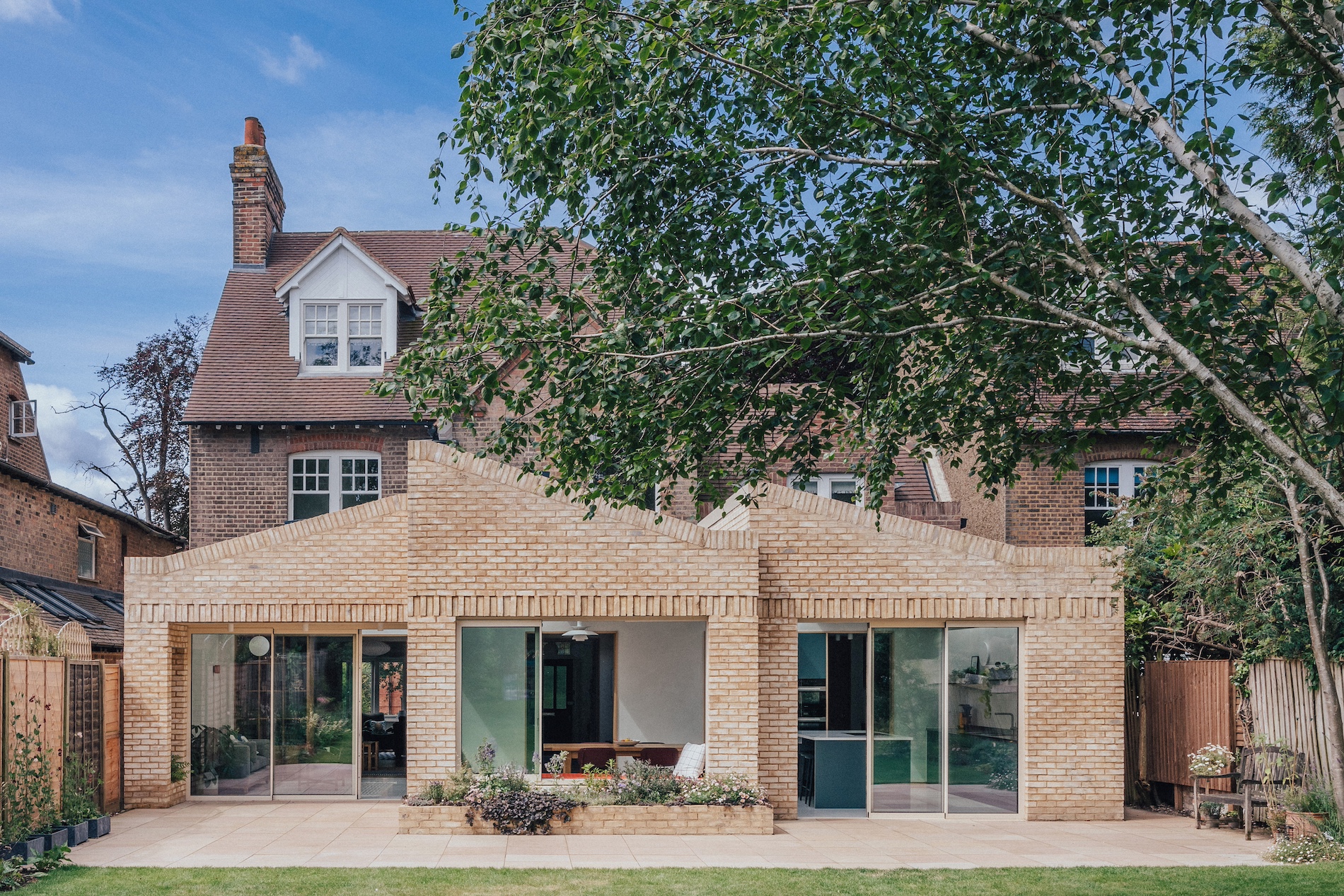Emil Eve’s renovation and extension of an Edwardian house in the Harpenden Conservation Area creates a flexible family home that integrates three new interlocking volumes.
Photos
Taran Wilkhu
Emil Eve has completed the transformation of a once-institutional Edwardian property, returning it to a contemporary and highly adaptable family home. Previously used as a nursery, the house had lost its original residential feel, prompting a full renovation that reconfigures the interior and extends the building into the rear garden.
A new brick extension introduces three interlocking volumes with an undulating sawtooth roof. Making use of handmade Danish waterstruck bricks, the addition breaks down the overall scale of the property, preventing the massing effect of a full-width orthogonal extension, but distinguishing itself from the original brickwork of the house behind. Geometric patterns repeated in the brickwork can also be found in new tiling and joinery, subtly reinforcing a sense of order and cohesion throughout.
Plan of the house.
Colour code: Red – rear elevation; yellow – side elevation and green – double-height space.
Numerical code: 1 – Kitchen + dining with window seat; 2 – Snug; 3 – Play room; 4 – Living room; 5 – Entrance hall; 6 – Office; 7 – Utility; 8 – Pantry; 9 – Cloakroom; 10 – WC; 11 – Library mezzanine above
Section.
“The staggered cluster of complementary volumes breaks down the scale of the wide house and allows a large amount of space to be added without dominating the original building,” Emma Perkin, director at Emil Eve Architects, told Architecture Today. “It also avoids the cavernous feeling you can get with a full width ‘box’ extension.”

Inside, mono-pitched ceilings follow the path of the sun, enhancing daylighting throughout the home. Working in tandem, sloped rooflights diffuse soft, even light across the lime-plastered interiors (breathable lime plaster has been employed to regulates humidity and sequester CO2), evoking the qualities of Nordic light – a nod to the client’s Norwegian heritage.
A new double-height space at the heart of the house includes a mezzanine library creating in turn new, layered connections throughout the house. The ground floor’s open-plan arrangement provides interconnected yet flexible living, dining, and kitchen areas, with sliding partitions allowing spaces to be adjusted as needed.
“We created a flexible floorplan, with sliding doors that act as partitions – partly inspired by the owners’ love of Japanese design,” added Perkin. “Each of the new spaces has its own connection to the garden, including a sheltered patio where two rooms with large sliding glass doors meet.”
A more traditional two-storey side extension houses a pantry, utility room, and guest suite, complementing the new work done to the rear. Other updates include a new main bedroom with a dressing room and ensuite, a family bathroom, and a dedicated home office.
Terrazzo flooring throughout the ground level reflects light deep into the home, with underfloor heating being embedded too. Elsewhere, natural materials have been selected for their durability and texture: solid oak joinery adds visual warmth and tactility, with Fenix, a sustainable wood-fibre-based material, being used in the kitchen.
Credits
Architect
Emil Eve Architects
Structural engineer
Mark & Partners
Contractor
ANCOBA Build
Approved inspector
Quadrant
Bricks
Petersen Tegl
Aluminium glazing
ID Systems
Joinery
ANCOBA Build
Terrazzo
Quiligotti
Lime plaster
St Astier EcoMortar
Additional images
Source: Architecture Today







